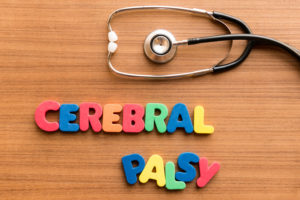3 Types of Cerebral Palsy and How to Identify Them
 At the Law Offices of Joseph M. Lichtenstein, we have a team of expert medical malpractice lawyers to deal with a variety of different kinds of birth injury law. One of the types of birth injuries we specialize in is the cerebral palsy diagnosis of all different types of cerebral palsy.
At the Law Offices of Joseph M. Lichtenstein, we have a team of expert medical malpractice lawyers to deal with a variety of different kinds of birth injury law. One of the types of birth injuries we specialize in is the cerebral palsy diagnosis of all different types of cerebral palsy.
Approximately seven out of every 1,000 babies are born will suffer a birth injury. The unfortunate fact of the matter, though, is that these injuries occur many times at the neglectful or inexperienced hands of the healthcare professional meant to assist in the process. When this happens, you and your child deserve to be compensated for the emotional and financial hardships that are likely to come along with it.
Cerebral palsy is known as the most common motor disorder children face, with about one out of every 3,232 children having some form of it, according to the Centers for Disease Control and Prevention (CDC). While certain types of cerebral palsy can be genetically inherited, the fact of the matter is that experts believe that is the case in only about 2% of CP cases. The rest are due to some injury during pregnancy, the birthing process, or early childhood.
However, each case of cerebral palsy is different. Here are three distinct types of cerebral palsy and some identifying factors.
- Spastic Cerebral Palsy: Also known as bilateral spasticity, spastic cerebral palsy is the most common form of cerebral palsy there is, accounting for well over 80% of every cerebral palsy case. This type of CP is categorized by stiff muscles that usually result in awkward and/or impaired movements.
- Ataxic Cerebral Palsy: Likely the second most common types of cerebral palsy affecting between five and 10% of all cases are what’s considered ataxic CP. This form is identified by poor coordination due to damage to cerebellar structures. Aesthetically, it also typically results in decreased muscle tone.
- Athetoid Cerebral Palsy: Probably the least common form is athetoid, or dyskinetic cerebral palsy (ADCP). There is no cure for this kind of CP and movements associated with this form can be described as uncontrollable writhing.
The healthy birth of a child is every parent’s goal, but unfortunately it doesn’t always go as planned. If you believe your baby was born with an injury due to the neglect, an accident, or any sort of mistake by your healthcare provider, it’s important to take the action you and your child deserve. Contact our team of professionals today.
